Researchers, universities, academic groups and attorneys general from more than a dozen US states are using the legal system to fight back against the Trump administration’s moves to cut billions of dollars from science agencies and research institutions. So far, the courts have been effective in stymying these attacks, which include pulling federal funding from universities, cancelling support for approved grants and terminating thousands of student visas.
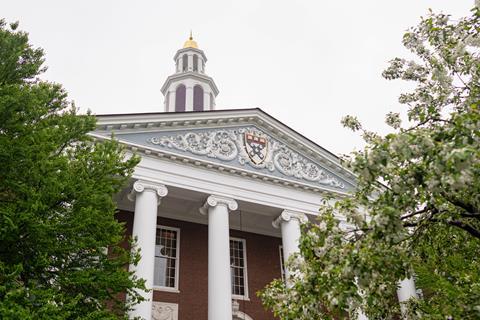
After Columbia University yielded to demands from the White House in March, following the administration pulling $400 million (£300 million) in research grants and other funding over the university’s handling of protests against the war in Gaza and alleged antisemitic activities on campus, Harvard University stood firm against similar demands.
Just days later the administration announced on 16 April that it would freeze $2.2 billion in multi-year grants and contracts to Harvard. This was just the start of a slew of attacks on the institution.
At the beginning of May, Trump also announced that Harvard would be stripped of its tax-exempt status. He accused the university of being ‘a political entity’ rather than an educational institution. This was followed by a 5 May letter to Harvard’s president, Alan Garber, from the education secretary Linda McMahon, announcing that the government will no longer award any grants to the institution.
Then, on 13 May, the Trump administration’s Task Force to Combat Anti-Semitism announced that eight government agencies were cancelling another $450 million in grants to Harvard, on top of the $2.2 billion and other funds the government had already withdrawn.
Harvard has also taken legal action. The President and Fellows of Harvard College – one of the university’s two governing boards – has sued the heads of federal agencies to halt the funding freeze, describing it as unlawful and beyond the government’s authority. To resolve these issues as quickly as possible, the university’s lawsuit requests that the court declare the Trump administration’s funding freeze illegal.

Garber reaffirmed in a 12 May letter to McMahon that the university will not cave to interference and pressure from the Trump administration. He defended Harvard’s record on antisemitism and made it clear that the university will not concede to what he called ‘the government’s unlawful attempt to control fundamental aspects of our university’s operations’.
District court judge Allison Burroughs from Massachusetts, who on 16 April temporarily blocked the Department of Energy (DOE) from implementing a 15% cap on indirect cost reimbursements for universities receiving its grants, will oversee Harvard’s lawsuit against the Trump administration.
Meanwhile, other major research universities are publicly supporting Harvard. The acting president of Columbia said in a 14 April statement that her university would ‘reject any agreement in which the government dictates what we teach, research or who we hire’. The next day, Stanford’s president and its provost released a statement praising Harvard’s decision to stand firm.
‘Universities need to address legitimate criticisms with humility and openness. But the way to bring about constructive change is not by destroying the nation’s capacity for scientific research, or through the government taking command of a private institution,’ the Stanford leaders stated. ‘Harvard’s objections to the letter it received are rooted in the American tradition of liberty, a tradition essential to our country’s universities, and worth defending.’
Trump administration officials had also sent a letter to Harvard in April with a list of demands, including discontinuing all diversity, equity and inclusion (DEI) offices and programmes, blocking the admission of international students who might be ‘supportive of terrorism or antisemitism’, submitting to a federal audit for ‘viewpoint diversity’ in admissions and hiring, and no longer recognising pro-Palestinian campus groups.
The presidents and chancellors of nearly 600 colleges and universities signed a public statement, released by the American Association of Colleges and Universities on 22 April, warning about ‘unprecedented government overreach and political interference now endangering American higher education’.
The dean of Harvard’s Faculty of Arts and Sciences, Hopi Hoekstra, acknowledged that there will likely be a drawn-out struggle with the Trump administration. ‘While Harvard is challenging the funding freeze in court, we can’t assume that resolution will be reached quickly or, even if Harvard prevails, that the funds will be returned in full,’ Hoekstra told The Harvard Crimson. ‘The federal funding landscape is fundamentally different today than it was just a few months ago,’ she continued, pointing out that some federal agencies that are major sources of research grants are poised to have their budgets halved.
Combatting thousands of research grant terminations
Science agencies are also being sued for cancelling hundreds of peer reviewed and already funded research grants with the only explanation being that they don’t align with the Trump administration’s priorities.
In early April, the American Civil Liberties Union (ACLU) and others representing several researchers sued the National Institutes of Health (NIH). The lawsuit claims that the abrupt cancellation of research grants by the NIH, the world’s largest public funder of biomedical research, constitutes a ‘reckless purge of federal grants’. The plaintiffs note that the government has not highlighted any genuine concerns about the rigour of targeted projects or any of their underlying data. They point out that over $2 billion is at stake just in NIH research grants, including $1.3 billion already spent on projects stopped midstream and $1.1 billion that has been revoked.
According to the lawsuit, the NIH has violated the law that governs how federal agencies can issue regulations by failing to provide scientific reasoning or follow proper procedure, and also exceeding its legal authority. The complaint seeks to restore funding to researchers and prevent the NIH from continuing to cut awards in what it calls an ‘arbitrary’ and ‘capricious’ manner.
Only a couple days after that suit was launched, Democratic attorneys general in 16 states also sued the Trump administration for summarily terminating NIH research grants beginning in March.
Beyond lawsuits to prevent the abrupt defunding of research grants, other legal actions have temporarily blocked implementation of a 15% cap on the indirect costs that the NIH and the DOE pay to their grantees to cover research-related expenses like lab maintenance, utilities and administrative costs. The average rate of indirect costs incurred by NIH grant recipients is estimated at more than 30%.
More recently, the National Science Foundation (NSF) followed suit and announced that it would adopt a standard 15% indirect cost rate for its grants and cooperative agreements, effective 5 May. Several academic organisations and 13 research universities immediately filed a lawsuit against the agency, which funds basic research in non-medical fields of science and engineering like chemistry, seeking to halt that action.
Opposing student visa cancellations
Universities and academic organisations are also in uproar over the recent mass termination of visas for thousands of foreign students studying, teaching and researching in the US. As of 24 April, nearly 300 colleges and universities throughout the country had identified more than 1800 international students and recent graduates whose legal status had been changed by the State Department and were facing deportation, Inside Higher Ed calculated.
Among those affected were many international students working in science and engineering fields, including a chemical engineering graduate student from Saudi Arabia who was studying at North Carolina State University when he learned in late March that his visa was cancelled without explanation. Within days, he had purchased a one-way plane ticket back to Saudi Arabia and left the country.
In response to such activities, students, universities, as well as academic and civil rights organisations, have filed more than 100 lawsuits, arguing that these visa terminations violated due process and targeted international students without sufficient cause.
Judges in at least 23 states have recently, and almost unanimously, ruled against the administration, issuing emergency orders to temporarily block student deportations.
This mounting legal pressure seemed to work and on 25 April the Trump administration appeared to reverse course and reinstate thousands of foreign student visas that it had cancelled. The announcement came in a court filing when a lawyer representing the government said that Immigration and Customs Enforcement (ICE) was restoring records that had suddenly disappeared from the Student and Exchange Visitor Information System (Sevis). Sevis hold records that universities and government agencies rely on to know whether foreign students studying in the US have valid visas.
Rafael Jaime – a PhD student at the University of California, Los Angeles and president of a chapter of the United Auto Workers (UAW) that represents 48,000 graduate students, postdocs and faculty in the University of California system – celebrated the development. He called the government’s announcement ‘a victory for international workers who overcame Trump’s fear tactics to speak out against these illegal attacks on their rights’. But confusion remains about the administration’s intent.
Right after news broke of the government’s apparent about-face, Department of Homeland Security spokeswoman Tricia McLaughlin stated that the administration has ‘not reversed course on a single visa revocation’. Instead, she said that the government had simply restored Sevis access for those who had not had their visa revoked.
Attorney Charles Kuck, founding partner of an immigration law firm in Atlanta and an adjunct law professor at the University of Georgia and Emory University, explains that the visa terminations had only been temporarily reversed. He says the administration was ‘clearly cooking up plans to revoke them again’, potentially including transfer, detention and deportation. ICE has taken inconsistent stances on whether a Sevis termination constitutes a failure to maintain visa status, Kuck states.
Indeed, just days after restoring visas, the Trump administration issued a memo that expanded the ability of officials to terminate the residency status of students in the Sevis system ‘as needed’.
‘Whenever the government catches non-US citizens breaking our laws, we will take action to revoke their status,’ announced Secretary of State Marco Rubio in early May. ‘This extends to the thousands of foreign students studying in the United States who abuse our hospitality,’ he said.
Brain drain strain
The ACLU of West Virginia called the government’s 25 April announcement ‘positive news’ for international students across the country. ‘We are continuing to monitor the situation closely,’ the organisation stated. ‘We want to be clear that the administration is backing down not because it’s the right thing to do, but because they have been dragged to court repeatedly and lost again and again.’
Additional pressure came from a motion that the American Association of University Professors (AAUP) filed in late March, which sought a preliminary injunction to stop the large-scale arrests, detentions, and deportations of foreign students and faculty engaged in what it said was constitutionally protected activities at universities.
Two weeks later, the Presidents’ Alliance on Higher Education and Immigration – a non-profit that brings together US college and university presidents and chancellors on immigration issues – submitted an amicus brief arguing in favour of a preliminary court order requested by the AAUP. The brief was supported by 86 institutions and higher education associations.
The AAUP is still waiting for a court order in its case seeking a preliminary injunction against the administration to stop it from arresting, detaining, and deporting non-citizen students and faculty who participate in pro-Palestinian activism or other forms of free speech. On 29 April, a federal judge denied the Trump administration’s motion to dismiss the lawsuit.
Veena Dubal, the AAUP’s general counsel, says it remains unclear what the administration’s reinstatement of some visas will mean for the future of international students in the US. ‘Many of the students have already left the country, others have applied to schools outside the US and still others are primed to leave,’ she says. ‘We have no idea if this change is temporary.’
In the meantime, this instability at research universities is prompting concerns about a significant scientific brain drain from the US. In a Nature poll from late March, three-quarters of the 1200 US scientists who responded are considering leaving the country. More recently, the journal’s analysis of its global science jobs platform revealed that US scientists submitted 32% more applications for jobs abroad between January and March 2025, compared with the same period last year. The number of US-based users browsing jobs abroad increased by 35%.
At the same time, programmes are popping up across Europe and elsewhere to recruit scientists from the US whose careers and/or research projects have been imperilled by the Trump administration.
The European Commission’s president, Ursula von der Leyen, announced earlier this month a new initiative to attract researchers and scientists to the EU. This €500 million (£421 million) programme, dubbed Choose Europe for Science, aims to make Europe ‘a magnet’ for researchers and scientists from around the world, including the US, through new long-term ‘super grants’, among other things. The initiative also sets a target for member states to spend 3% of their GDP on research and development projects by 2030. Other countries such as China also appear to be trying to lure disillusioned and recently laid-off US government researchers.
Governor Maura Healy of Massachusetts, home to numerous top-tier research universities like Harvard and the Massachusetts Institute of Technology, told CNN in late April: ‘China is on our campuses, recruiting the scientists, recruiting the postdocs, recruiting all the folks who are in labs and running clinical trials right now, and saying, “Come to China – we’ll give you a lab, we’ll give you 90 staff people, we’ll fund you if the American government won’t.”’






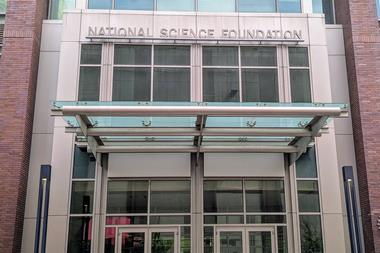
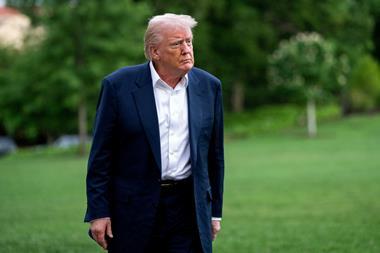
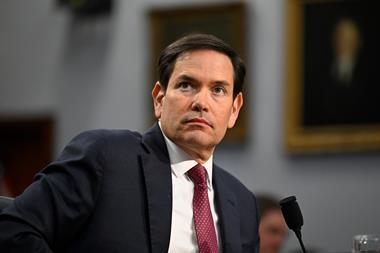
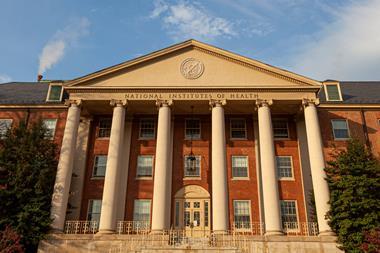







No comments yet